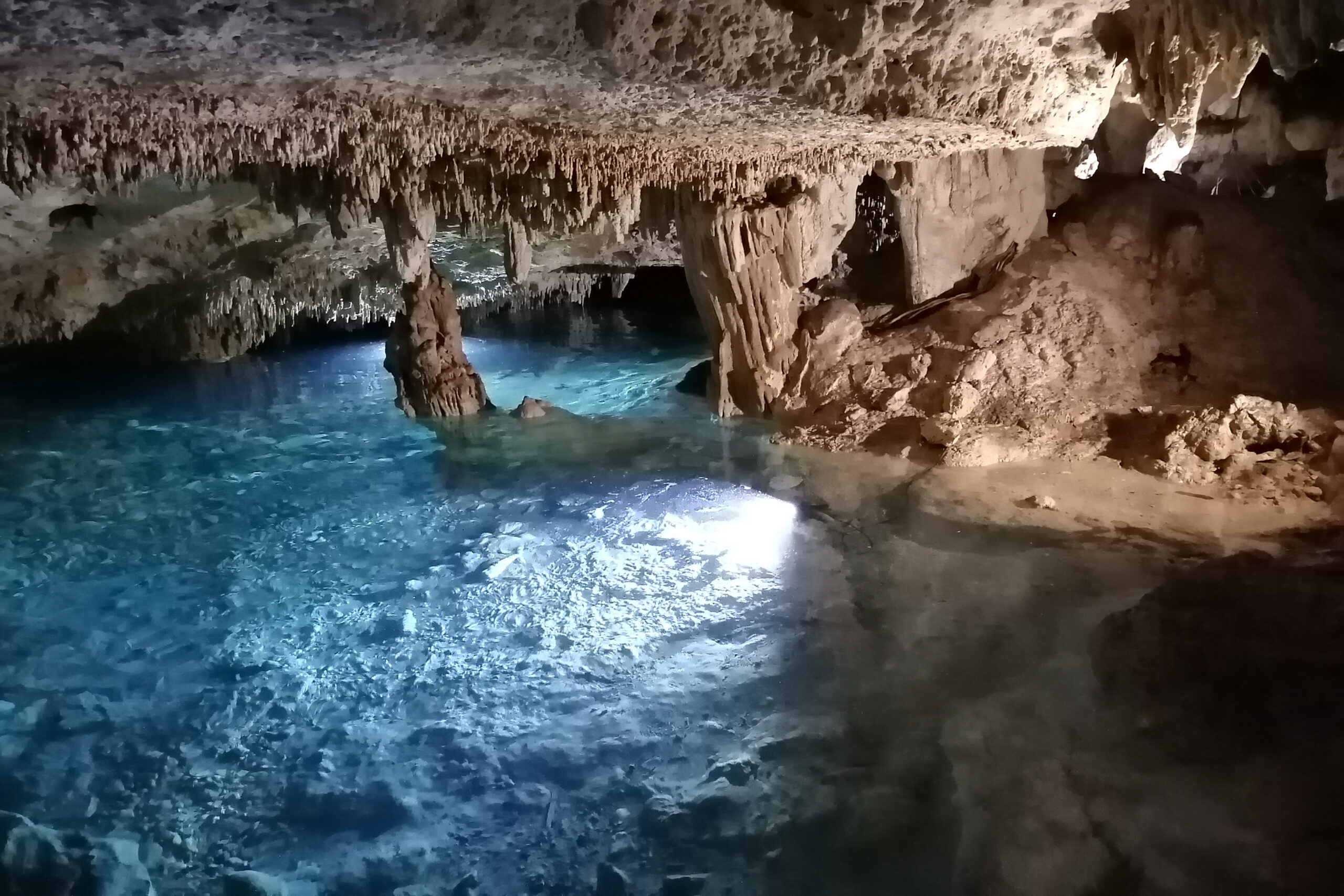If you have been searching for things to do on Mexico‘s Yucatan Peninsula, you’ve probably heard of a cenote. But what is a cenote, what types are there, and what’s the story behind them?
Table of Contents
What is a cenote?
A cenote is defined as a natural subterranean sinkhole, full of stalagmites, stalactites, crisp groundwater and endemic wildlife. It is known as an underground “water well”, because the cenotes were used by the Mayans as a source of drinking water. Cenotes were originally used in the ancient Mayan times for sacrificial offerings.
How is a cenote formed?
There are different theories on the formation of cenotes. Basically, it’s water from ice ages. A sequence of geologic events and climatic changes led to the formation of these exceptional ecosystems. A cenote is created where a cave ceiling collapses and exposes groundwater underneath.
The formation of the Yucatan Peninsula started about 70 million years ago. The peninsula was a giant reef below the water, and there was little by little formation of coral reefs. In other words, if you pick up a stone from the cenotes, there might be fossils inside because everything was water. These fossils are commonly seen in cenotes that allow diving. During the last ice age, the ocean level dropped and water levels became about 300 feet lower than in the present day. This exposed the reef to the surface of the earth. The coral died, and jungles were formed over the mile-thick limestone platform which was created by the coral reef. And there are these so-called cenotes.
The entire peninsula is limestone. There have been several ice ages, each of them lasting over 100,000 years. When there is ice, the water level goes down. When the ice melts, the water level goes up
Formations of stalactites and stalagmites in a cenote
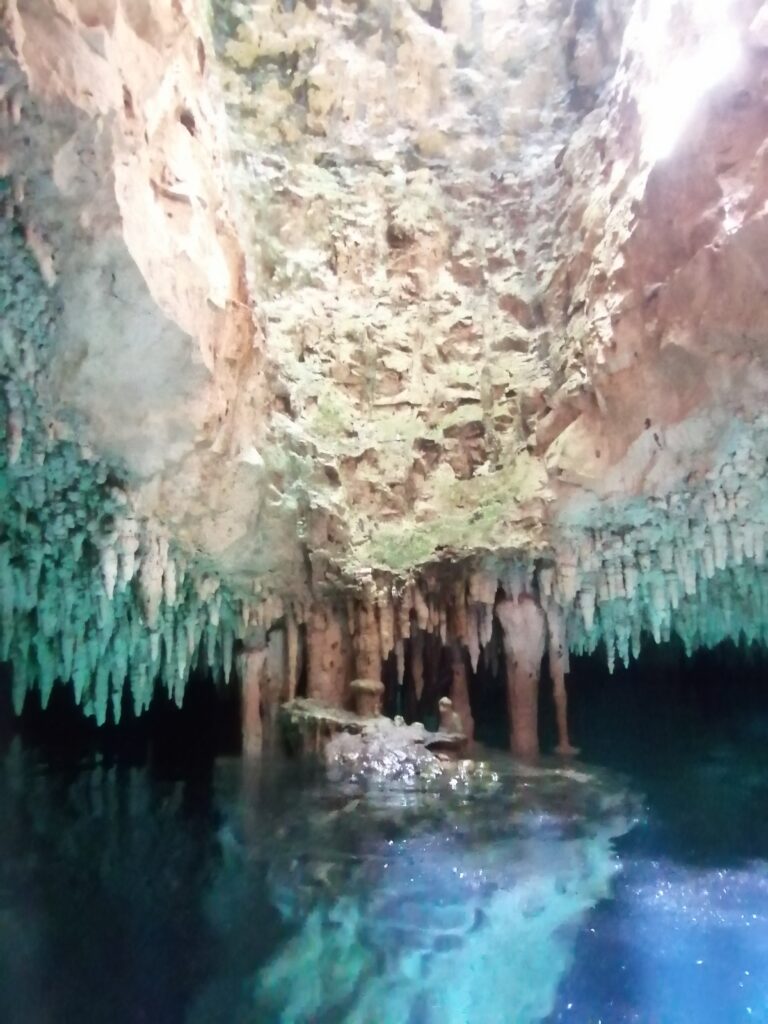
Stalactites: The ice-shaped formations that hang from the ceiling of a cave, which are usually pointed tips. They are produced by precipitation of minerals from water dripping through the cave ceiling. When the rain water filters through the limestone and then there’s a little drop coming through the limestone and it evaporates on top. Then, the limestone, calcium and all minerals stay there. icicles drop down and get bigger and bigger. There are different types of stalactites. Some look like icicles, others like fans, so it’s a completely different world.
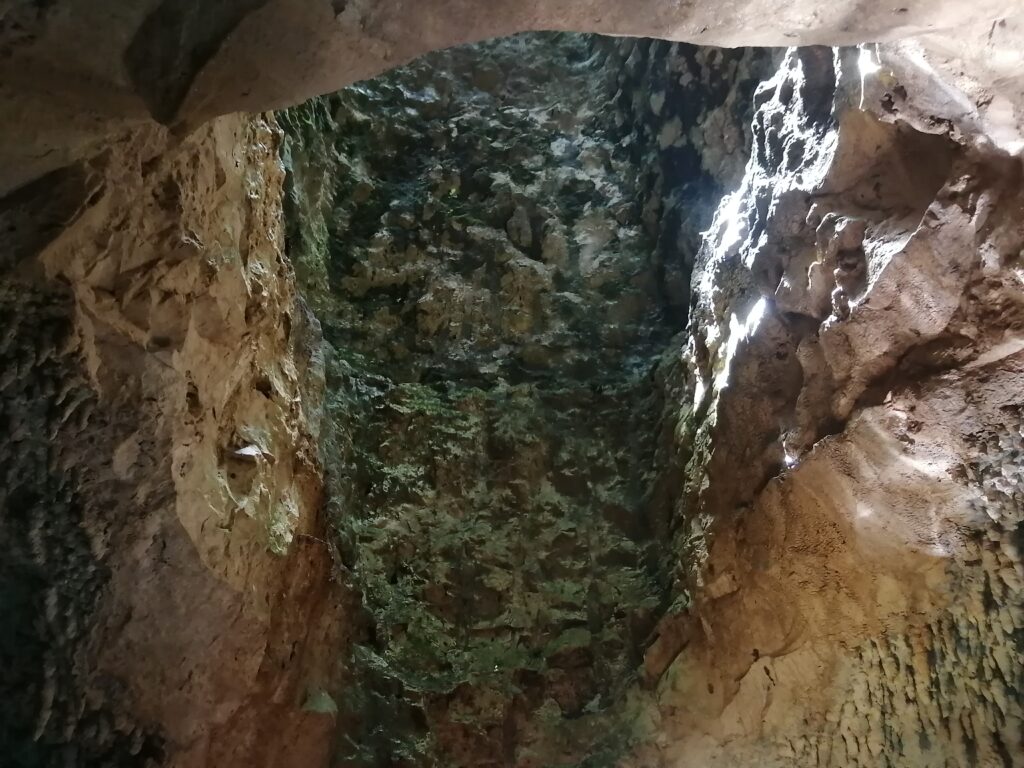
Stalagmites: The upward-growing formations, with mineral deposits, which have precipitated from the water dripping onto the floor of the cave. There are many types of mineral formations in cenotes and caves, but most of them have tips that are either rounded or flattened.
If the drop doesn’t evaporate and folds down on the ground, and the water evaporates over them, the calcium and all minerals in this little drop, they will stay and little by little there is a formation of the stalagmite.
When they come together, they have the columns. It takes around 100 years for 1 cm of stalactite to grow.
Types of cenotes
There are 5 types of cenotes.
Cavern: A cavern is an underground cenote which is completely covered. Other than the entrance, it can feel completely dark.
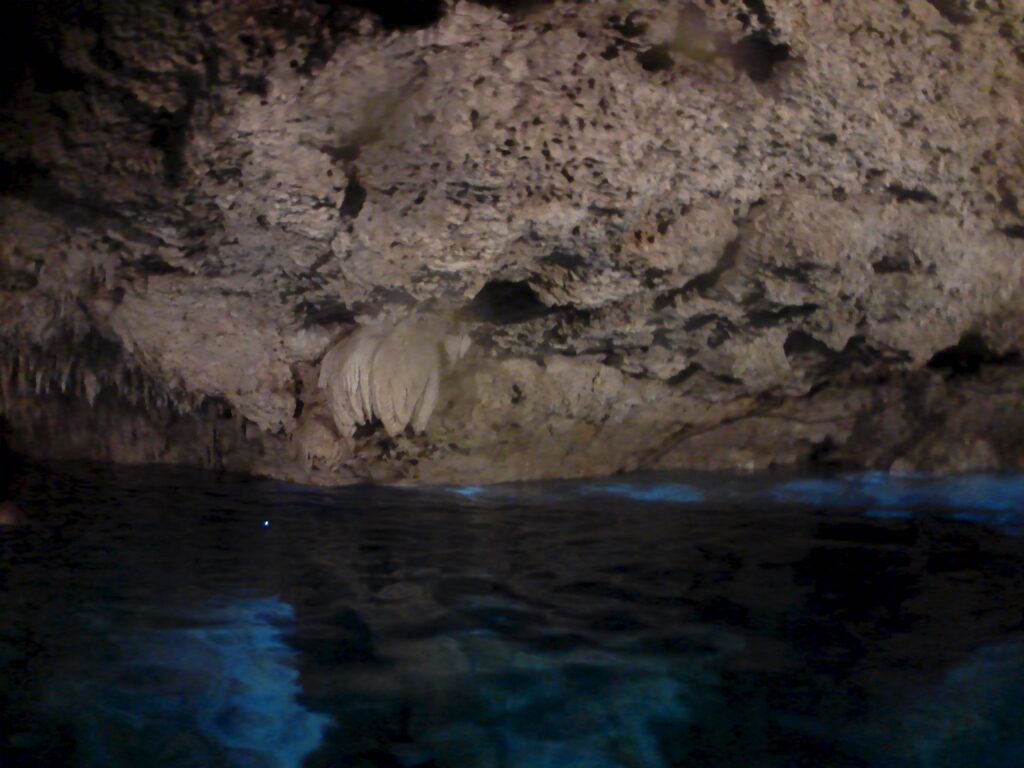
Semi-Open Cenotes: As the name sums up, this is the type of cenote that is partially open. This is due to the erosion that has eaten away the limestone bedrock and exposed part of the original coral reef to the surface. Although it looks like the majority is outside, the truth is, one can swim under the cenote and find the many stalactites and stalagmites. Therefore, the majority of the formations are still underneath.
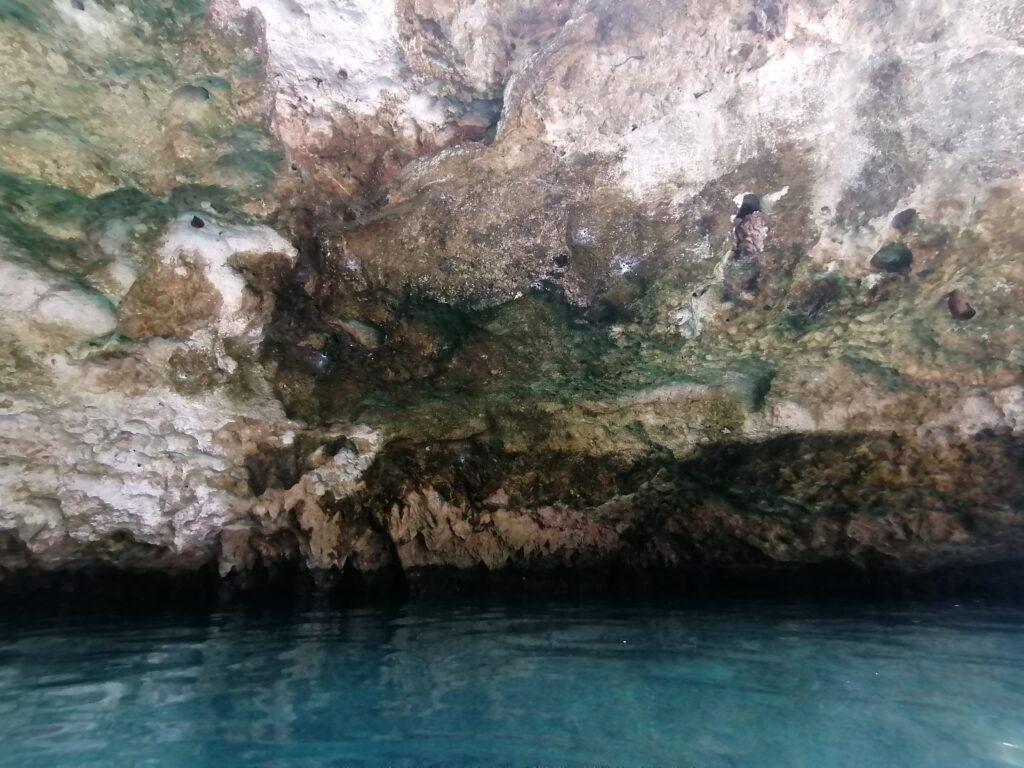
Open Cenotes: although it may seem like a pond, open cenotes are more than that. An open cenote still forms part of the underground river system that connects the region by water. Each open cenote has its own beauty, most of them being surrounded by lush vegetation. Lots of wildlife lives in these cenotes due to the light and crystal-clear water. Some open cenotes offer the adventurous traveler the option of diving, while others offer the retreat buffs and/or romantic travelers the option to simply relax in peace and quiet.
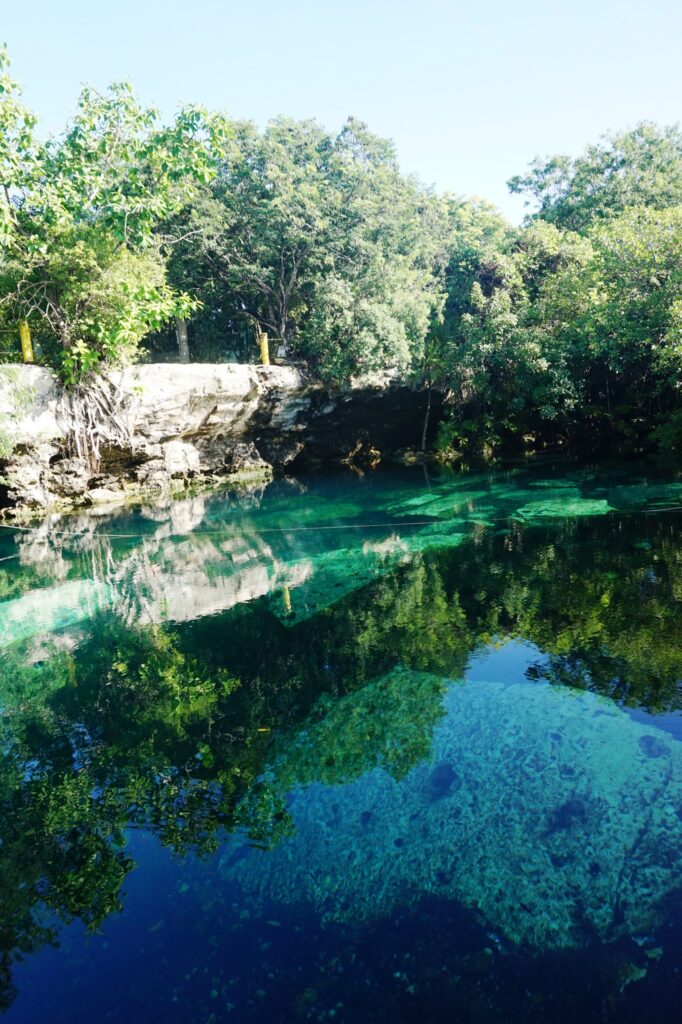
Cavernous Cenotes: these are also underground, but with more stalactites. They’re usually accessed by an entrance from land level, and there is often a hole somewhere between the shallow and deep areas, bringing in light. That hole is where the earth quaked in and you have straight walls (stalactites) with a round opening at the top. There were formations from coral reefs, and now we have limestone. The formations were washed out from teh water, and sometimes the roof was not thick and collapsed.
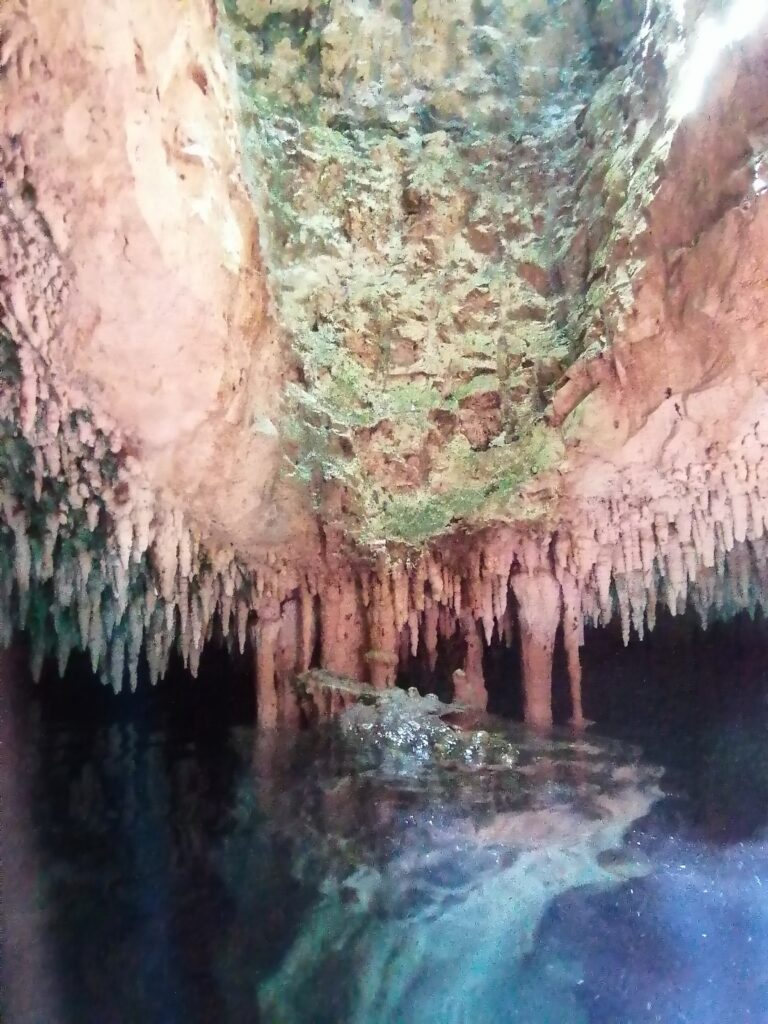
Ocean inlet: this is the most interesting type. While visiting the other 4 types, keep in mind that cenotes used to be the only water source for the Mayans. The water flows through the cenotes and eventually reaches the ocean. In order to reach the ocean, the water flows from the caverns and open cenotes, and eventually reaches an ocean inlet. When you swim in an ocean inlet, once in a while you will feel cold water. That cold water means the water is flowing in from a cavern. This is illustrated in the image labeled “water flowing from a cavern”. If I was a scuba diver and tried swimming into the hole seen in that picture, I would eventually end up in a cavern!
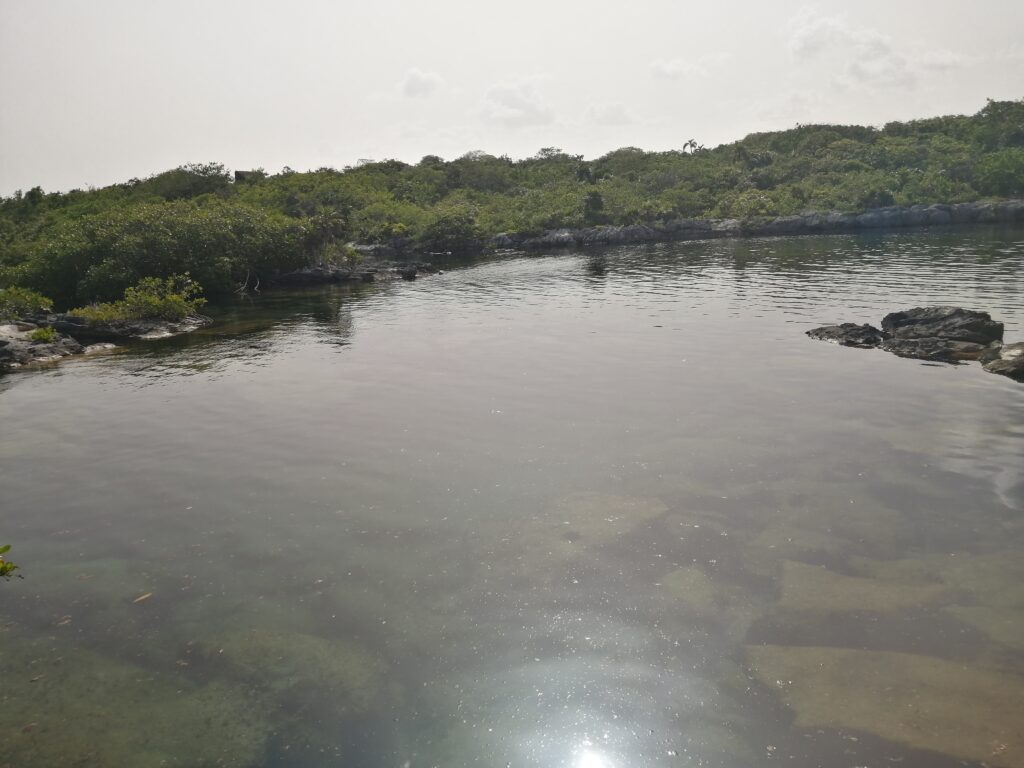
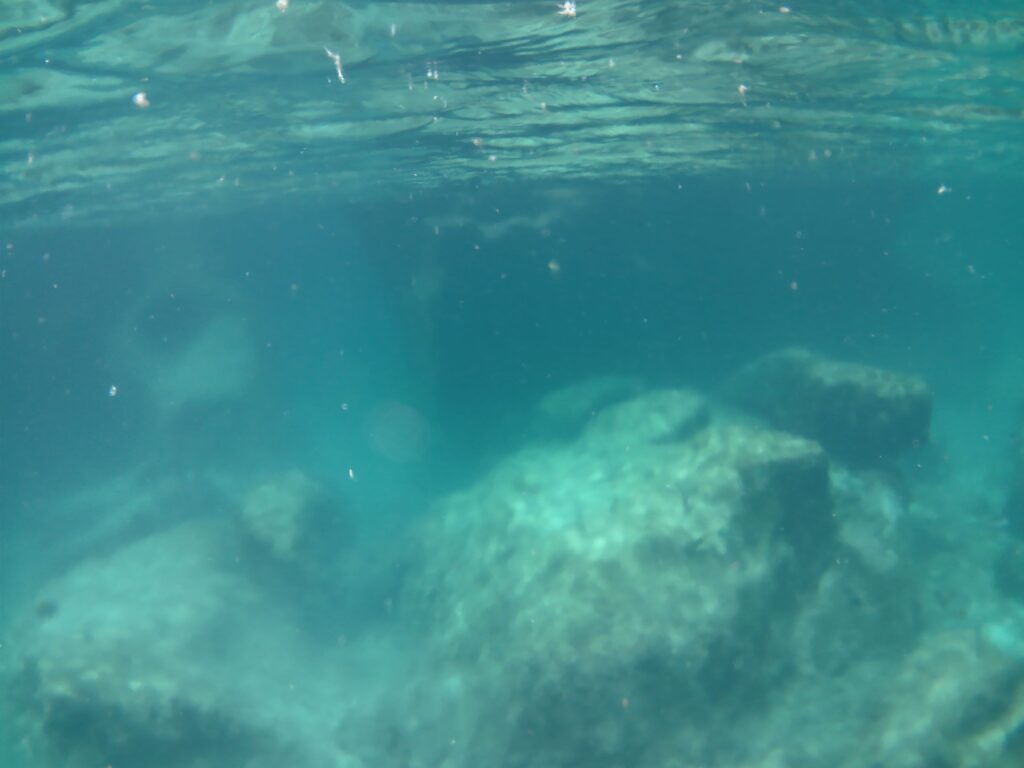
How to experience the cenotes
The best way would be to book a tour which takes you to more cenotes in one day. Aventuras Mayas has a tour called Mayan Adventure, which takes you to experience all 5 types. There is also a park called Xenotes, owned by Xcaret, which offers a similar experience.
For romantic travelers who do not want a crowd, if you’re staying within a 30-km distance out of Playa del Carmen, take a taxi or a local bus to Cenote Cristalino or Cenote Azul. Those cenotes are not served by tour companies, hence not very known. As a result, you might find yourselves to be the only ones there.

